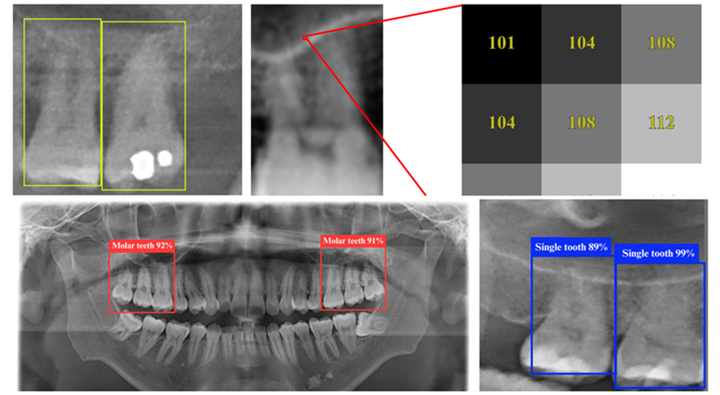The Ateneo Laboratory for Intelligent Visual Environments (ALIVE) and international researchers have developed a deep learning model that aims to revolutionize dentistry, with the capability to identify tooth and sinus structures in dental X-rays with an accuracy of 98.2%.

Notoriously difficult to diagnose
Using a sophisticated object detection algorithm, the system was specifically trained to help quickly and more accurately detect odontogenic sinusitis—a condition that is often misdiagnosed as general sinusitis and, if left unchecked, could spread infection to the face, eyes, and even the brain.
Odontogenic sinusitis, caused by infections or complications related to the upper teeth, is notoriously difficult to diagnose. Its symptoms—nasal congestion, foul-smelling nasal discharge, and occasional tooth pain—are nearly identical to those of ordinary general sinusitis. To make matters worse, only about a third of patients experience noticeable dental pain, meaning the condition is frequently overlooked by general practitioners. Traditional diagnosis requires collaboration between dentists and otolaryngologists, often leading to delayed treatment.
You Only Look Once
By training deep learning models on dental panoramic radiograph (DPR) images, the researchers found a way to detect key anatomical relationships—such as the proximity of tooth roots to sinuses—with unprecedented accuracy. The study used the YOLO 11n deep learning model, achieving an impressive 98.2% accuracy, outperforming traditional detection methods.
YOLO (You Only Look Once) is a state-of-the-art object detection algorithm known for its speed and accuracy. The YOLO 11n model, an improved version, is optimized for medical imaging tasks, enabling it to identify teeth and sinus structures with high precision in a single pass through the image. Unlike conventional diagnostic methods, which require multiple steps and expert interpretation, YOLO 11n rapidly pinpoints the affected areas in real time, making it an invaluable tool for dental professionals.
AI’s growing role in medicine
Beyond accuracy, this AI-driven approach also offers practical benefits. It minimizes patient exposure to radiation by reducing the need for CT scans, which are currently the gold standard for diagnosing odontogenic sinusitis. It also provides a cost-effective screening tool, particularly useful in resource-limited areas where advanced imaging technology may not be available. And by flagging potential cases early, the system allows for prompt intervention, preventing complications and reducing the burden on healthcare providers.
This breakthrough highlights AI’s growing role in medical diagnostics, bridging gaps where human expertise alone may fall short. With further validation, this technology could become a standard tool in dental and ENT clinics, ensuring that more patients receive timely and accurate diagnoses.
ALIVE head Dr. Patricia Angela R. Abu and her colleagues from Taiwan’s Chang Gung Memorial Hospital, National Cheng Kung University, Chung Yuan Christian University, and Ming Chi University of Technology published their findings in the journal, “Bioengineering.”

